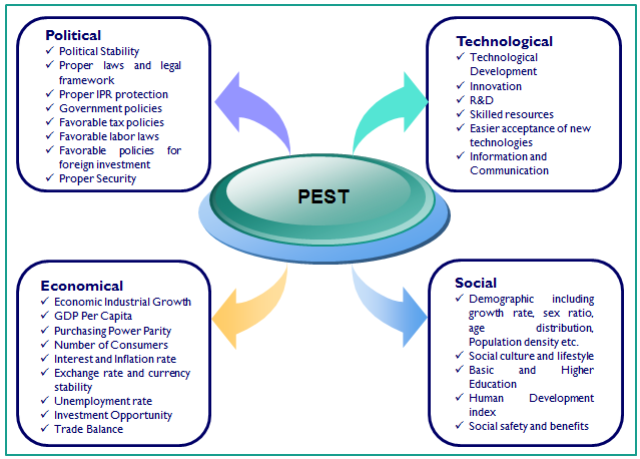abhishreshthaa
Abhijeet S
<h2>Pest Analysis On Bank of America Corporation</h2>
Bank of America Corporation (NYSE: BAC) is a financial services company, the largest bank holding company in the United States, by assets, and the second largest bank by market capitalization.[5][6][7][8] Bank of America serves clients in more than 150 countries and has a relationship with 99% of the U.S. Fortune 500 companies and 83% of the Fortune Global 500. The company is a member of the Federal Deposit Insurance Corporation (FDIC) and a component of both the S&P 500 Index and the Dow Jones Industrial Average.[9][10][11]
As of 2010, Bank of America is the fifth largest company in the United States by total revenue,[12] as well as the second largest non-oil company in the US (after Wal-Mart). In 2010, Forbes listed Bank of America as the third largest company in the world.[13]
The bank's 2008 acquisition of Merrill Lynch made Bank of America the world's largest wealth manager and a major player in the investment banking industry.[14]
The company holds 12.2% of all U.S. deposits, as of August 2009,[15] and is one of the Big Four Banks of the United States, along with Citigroup, JP Morgan Chase and Wells Fargo — its main competitors
The global textile and clothing industry also experienced changes. One of the biggest changes is the removal of import quotas that has opened opportunities for large exporters such as China and India. The textile and clothing industry, particularly in Europe is characterized by fragmented production with a large number of small and medium-sized companies mainly located in Italy, Greece, France, Germany and Spain (Nordas 2004). The textile and clothing industry in Europe is also becoming more international and international competitors are posing greater threats. Sub-contracting or delocalization of textile and clothing production to countries with lower labor and transportation costs is also becoming popular among European retailers as it reduce lead-time and costs (Berkeley and Steuer 2000). European retailers and manufacturers are also changing their business models to keep up with the changing customer demands and tastes (Lopez and Fan 2007).

The fashion industry is composed of different products and markets where there is an element of style, which is short-lived. The fashion industry is characterized by the following characteristics:
1. Short Life-Cycles – the product is often short-lived, designed to capture the mood of the moment. Consequently, the period in which it will be saleable is likely to be very short and seasonal, measured in months or even weeks.
2. High Volatility – demand for these products is rarely stable or linear. It may be influenced by the inconsistencies in weather, media, celebrities and icons.
3. Low Predictability – because of the volatility of demand it is extremely difficult to forecast with any accuracy even total demand within a period, let alone week by week or item by item demand.
4. High Impulse Purchasing – many buying decisions by consumers for these products are made at the point of purchase. Meaning, the shopper when confronted with the product is stimulated to buy it, hence the critical need for ‘availability’.
The clothing industry has been changed by globalization. Now national brands such as Zara and Mango from Spain, Topshop from the United Kingdom, Hennes & Mauritz from Sweden, Gap from the United States, United Colors of Benetton from Italy, Uniqlo from Japan and Esprit from Hong Kong are crossing borders to become national brands. These clothes retailers are following the internationalization process of US retailers predominantly targeting the youth market (Stone and McCall 2004). Today’s fashion industry is highly competitive and the constant need to refresh product arranges means that there is an inevitable move by many retailers to extend the number of ‘seasons’ (Christopher et al 2004).
Zara positions itself as the designer-boutique alternative for the price-conscious but trendy consumer (Cohen and Roussel 2004). Today’s consumers are spending less on clothing – choosing to spend their disposable income on healthcare, electronics, education, and travel and leisure. Moreover they can now
Last edited by a moderator:
